Pretty simple, but very beautiful, the actinidium plant has long passed in the gardens of many dachensors. Although it is a subtropical guest, gardeners of Siberia and Urals learned to successfully grow this Lian in their climatic conditions. According to scientific data, this exotic liana has a very ancient history of its origin. It is said that she appeared in the era of dinosaurs and was able to survive the glacial period. Perhaps it is this "survivability" of actinidia and allows you to successfully adapt to growth in the Siberian regions. This article will be very useful to summer houses who want to acquire such a plant at their cottage plot in Siberia or in the Urals. After all, the decorative value of this plethomic plant is very large. You can not only decorate actinidia gazebo, balconies, but also "hide" from the view of unsightly buildings, walls, etc.
Characteristic features of Aktindia
Aktinidia in the Urals is not only a favorite plant of gardeners to decorate their sites, but also highly appreciated for its delicious fruits. This prehistoric liana, of course, has undergone a number of changes over the time of its existence. The following characteristic features are inherent in modern actinidia:
- aktinidia is a biscuit plant. This means that if you want to see the fruits of this Liana, then you need to plant and the "male" bush, which will be a pollinator. There is also a landing and samopidal actinide, which gives fruit, but in not so large quantities;
- aktinidia is a leaf falling liana. In the autumn of its leaves acquire spectacular color. They can become crimson, yellow;
- the leaves have a slightly elongated heart shape. The edges of the leaflets can be both smooth and slightly rugged;
- blossom short. Amazing white flowers begin to bloom in about april. Liana also exudes the attractive aroma during flowering;
- aktinondi fruits may have a slightly pubescent surface. There are views and smooth fruits. The taste of them is sour-sweet. The fruits of black currant in the content of vitamin C content are significantly advanced. The harvest is usually produced at the end of summer;
- in the Urals, actinidia fruits have incredible value. Important vitamin C can be saved in these fruits in different ways. If the ripe fruits do not remove immediately from the twigs, and give them to refer to the onset of the autumn of the first cold, the ability to continuously stored will only increase. Experienced hostesses are boiled from the fruit of actinidia jam, jams, compotes, are supplied in fresh, dried, etc;
- a high value of actinidia and folk medicine. Healers have long been noticed the ability of this plant to reduce cholesterol in the blood, supply the body with missing vitamins and microelements; Fight against the ailments of digestive, respiratory and cardiovascular systems. For the preparation of various infusions, brazers go away with absolutely all parts of this liana, including a bark, roots, flowers.
Types and varieties of actinidia for the Urals
Aktinidia is a thermo-loving plant, and to grow it in the Siberian climate, you need to carefully come to the question of choosing a variety of this Liana. The grade must have excellent cold-resistant characteristics and be able to resist sharp climate shifts. Experienced Gardeners of the Urals have long been convinced that the Kolomikt actinide is simply not found for such climatic conditions. Some gardeners practice growing and actinidia argutta. But the most popular view is still actinidia kolomykt in the Urals. This species has a huge variety of varieties:
- "Dr. Shimanovsky". Very interesting hybrid Aktinidia variety, which is known for its high decorative characteristics. Your neighbors will surely be surprised by unusual white-green leaves in spring and slightly pink in summer. Ripe fruits acquire yellow color and immediately fall after ripening. Liana has a very fast annual increase - up to 1.5 meters. In general, it reaches a height of about 4 meters.
- "Adam". It is also a very popular hybrid variety for the Urals. Liana is also famous for unusual grace of foliage. This color is modified every year. Aktinidia grows up to 4 meters. May be also planted in a pot, and in open ground.
- "Queen Garden." This variety has the early degree of ripening of fruits that can reach the mass of 3.5 gr. In the form of fruit oval and have a greenish tint. It is considered the middle-resistant Lian.
- "Waffle". This variety will surprise you with its sweet fruits weighing 3.2 gr. It has an average degree of maturation. Liana grows up to 2-3 m and has a crown of medium density.
- "People's". The fruits of this actinide exude a sweet strawberry fragrance. Grow weight up to 3-3.2 grams and have a compressed cylindrical shape. Savages have a beautiful brown color, which is contrasting the color of the crown.
- "Hope". This liana has a whirlpool and grows up to 6 m. Perfectly suitable for growing gardeners amateurs. Early maturation of fruit. Fruits are slightly pubes and have a sweet taste.
- "Magpie". Variety with excellent winter-hardy performance. The fruits have a green color, a smooth surface and a mass to 2.7 gr.
How to grow actinidia in the Urals
Step 1. Choose a landing space
- When choosing a place for actinidia in the Urals for landing, you must not forget that this plant will grow at this place for a very long time. It is a long-liver. There should be enough space for the growth of actinidia both in height and width. Focus on the maximum dimensions that your selected variety can achieve. Pre-provider support for actinidia, because It is still liana.
- According to the composition of the soil, it is desirable to be neutral or weakly acid.
- Aktinidia will grow best on the sampling or driving fertile soils, which are rich in humus.
- Although Aktinidia loves moisture, but it does not tolerate stagnation of water in the roots. Therefore, if the groundwater is too close to the surface on your site, then you should either choose a sublime area, or take care of good drainage.
- To collect a delicious and rich harvest, the plant should get enough sunlight. Some varieties, though both shades, still require solar lighting. You can choose as the "neighbors" trees that will create a light half of your crown.
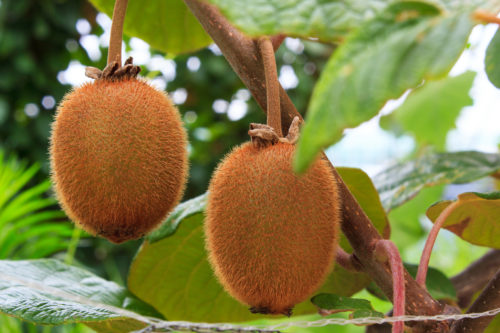
Step 2. Choose time for landing
Siberian climatic conditions with fairly early autumn frosts simply do not allow the landing of actinidia in the fall. At the autumn time it is better to make a choice suitable for landing and preparing landing pits. Experienced Gardeners of Urals recommend starting landing at the beginning of May, when the threat of too serious frosts and sharp change of temperature.
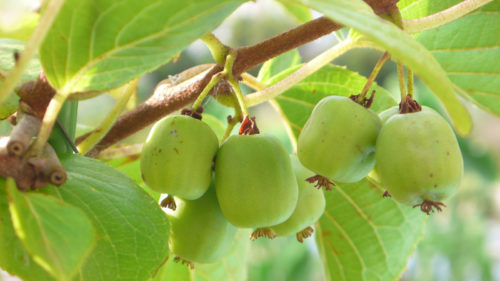
Step 3. Select the landing material
The selection of landing material should always be approached with special care. From this will depend on how your plant will grow whether it will have declared decorative qualities, whether there will be a tasty and rich crop. In order not to make a mistake in the choice, follow the following advice of experienced gardeners of the Urals:
- it is not necessary to purchase Aktinond's seedlings from the hands. So, you can not be confident by 100% as such a planting material. You cannot be confident in the winter hardiness of such plants - one of the main criteria for the choice of plants for planting in the Urals. Aktinidia in the Urals Buy is not a problem. Give your preference to buy seedlings in specialized nurseries, where seedlings are grown, or in narrow-profile stores for gardeners;
- aktinidia has fairly fragile roots that can be easily damaged during transportation. Therefore, actinidia seedlings are sold with a closed root system;
- do not chase in the size of seedlings. It is better to acquire plants that are not more than 1 year. So, you do not risk buy Aktinidia with a risen excavation room. And a 1-year-old seedling, besides, it is much better to take root at a new place of growth;
- most gardeners acquire Aktinidia not only for her decorative qualities, but also in order to obtain a crop. If you also want to receive a harvest from your site with a "shock" dose of vitamin C, then on 3 "female" seedlings worth getting 1 "male".
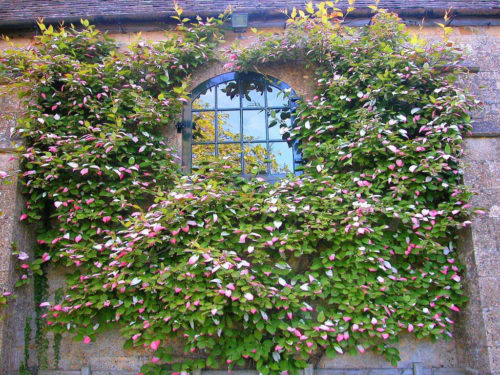
Step 4. Preparation of soil and landing
As already mentioned, it is already necessary to prepare the ground for falling in the fall, and the landing itself produce in the spring.
- because to start digging the landing pits, you must think through the scheme of their location. Of course, it is only necessary in the case of landing not one plant. Planting pits are best spaced in a row that will be directed from the north side to the south. It is thanks to this plants that will be able to get the optimal amount of sunlight. Between 2 plants, stick to the minimum distance of 1.5-2 meters. If you land Aktinidia into several rows, then between the rows leave about 4 meters of free space;
- if there are a lot of plants and you try them into a row, instead of the landing holes dig a trench with a depth of 50 cm and a width of 40-50 cm. Sizes of the landing pit - 50 * 50 cm or 60 * 60 cm;
- at the bottom of the pit it is necessary to lay a good layer of drainage. It can be pebbles, brick, small stones;
- next, you need to prepare a nutritious earth mix. It is necessary to add 9-10 kg of humoring, 200 grams of superphosphate, 80 grams of potash salt and 50 g. These proportions are given for one landing pit;
- 1/3 of the landing jama is filled with the resulting nutrient mixture by a holloch;
- if the plant was bought with an open root system, then the roots must be carefully distributed over the holly. If the actinidium was bought with a closed root system, then an earthen com before immersion in the landing pit should be moistened. After that, fall asleep the rest of the soil, gently tamping it;
- root neck do not shuffle;
- after landing, Aktindia needs to be abundantly pouring;
- after irrigation, do not forget to mulch the surface of the earth, so as not to give moisture quickly evaporate. For this procedure, leaves, peat or humus are perfectly suitable.
Aktinidia Kolomykta: Care in the Urals
Aktinidia in the Urals is not only a decorative, but also an extremely useful plant, because It can give a crop of delicious fruits that are incredibly rich in vitamins. To get a maximum benefit from this exotic Liana, you need to take care of it correctly. For actinidia Kolomikt in the Urals, care is not complicated:
- young plants that are not yet 1 year old, you need to protect from scorching sunlight. For this purpose, any material that you can find is suitable. The main thing is that he created the half-day for Aktindia. Adult Lianams will not be so scary straight sun rays;
- waterings should not be too abundant and frequent. Water Lian in the evening or morning when the weather is especially arid. The effective method of preserving moisture in the roots is the mulching of the rolling circle. Remember that Aktinidia does not endure the soil moisure;
- getting rid of any weeds is also a mandatory care element. This will not only create a well-kept type of plant, but also protects it from possible pests, diseases that can spread weeds;
- the loosening of the priority circle should not be deep, because Roots are not too deep;
- aktinidia speaks differently to various feeding. As soon as the growing period begins, you can make organic or nitrogen fertilizers in the calculation of 2 kg per 1 sq.m. The next feeding will occur in the summer and will be made in making a wood ash. And in order to reinforce the plant after active flowering, the ripening of fruit, in the fall, use 10 casine salt and about 35 grams of superphosphate per 1 sq. m. landing;
- the fragile shoots of young actinidia can become excellent delicacy for rodents and even domestic cats. To protect you can use the grid;
- aktinidia, which is intended for cultivation in the Urals, has winter-hardy qualities. Therefore, for the winter it will be enough to be swept over with recovered leaves and cover with a sweetheart. As you can see, the Kolomikt actinide landing and care in the Urals is not at all difficult.
How to form a beautiful crown of actinidia
Since Aktinidia is a decorative plant, it is necessary to engage in the formation of the crown. So, Liana will look well-groomed, more magnificent, every year will delight you with new and powerful shoots.
- The start time of the crown formation in all varieties and each plant can separately be different. Usually they look at how liana rushes on the 2nd year of his life. If the shoots have grown enough, you can begin trimming on the 2nd year. If not, then tolerate the next year.
- With initial trimming, all shoots are removed, except for the main 3rds, which then need to be tied to the support vertically.
- In summer, new shoots will appear. Again, you need to choose the strongest of them and tie them to the support, but already horizontally, as if forming a fan. The rest of the shoots are removed. You might think that too many new shoots are deleted, and it is incorrect. But this is done so that Krone does not thwart.
- Each autumn cut the top pieces of shoots for several kidneys.
- Starting with 3-4 years of life of actinidia, the formation of already fruit shoots, which should be shorter. Choose the most powerful and tapping them vertically. In the summer, again choose the most powerful and tapping already horizontally.
- From 3-4 years of life, the plant will gradually need in rejuvenating trimming. To do this, it will be necessary to delete dead, damaged shoots that are no longer needed by Liana.
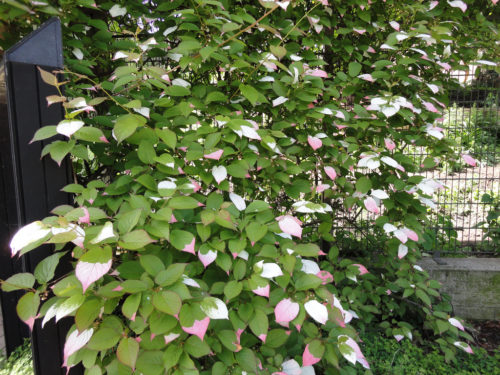
Actinide growing difficulties in the Urals
The cultivation of actinidia in the Far East should not frighten the gardeners with numerous diseases of this plant. They are practically no. Hybrid varieties are so successful that in addition to good winter-hardy qualities, they have an incredible resistance to negative environmental conditions, including diseases.

Among those rare diseases that can still hit actinidia, can be listed:
- Philostose. This fungal disease can most often expose rather old lianas, lianas, which grow in adverse conditions, which are often susceptible to the invasions of rodents. It is very easy to notice this. If you saw on some leaves just dark spots with a slightly burgundy border border, and on other leaves - holes inside such stains, then it is most likely a philostose.
- Ramularity is also a fungal disease that can be seen on whitish spots from two sides of the sheet. Sick leaves should be removed, and the Liana itself spray with burglar liquid.
- Fruit lesions. Various mold damage to actinidia fruit is most characteristic of Aktinidia Argutta.
The cultivation of actinidia in the Urals is a pretty pleasant and not difficult lesson. You will incredibly delight and amazing appearance of this Liana, and a rich harvest of her fruit, which you will definitely collect with proper care. Special winter-resistant varieties of actinidia make the process of its cultivation in the Urals light. Successes in gardening!

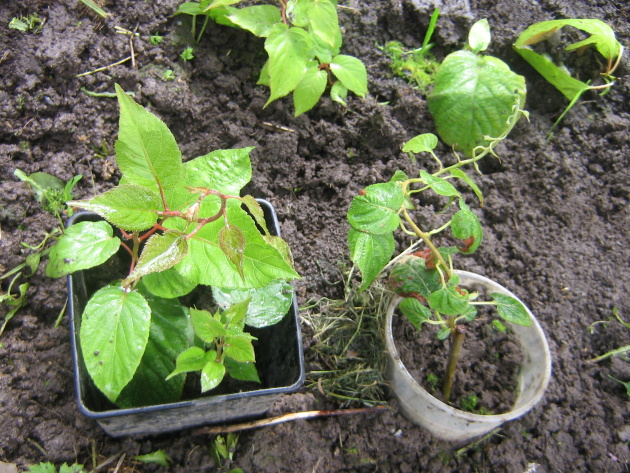
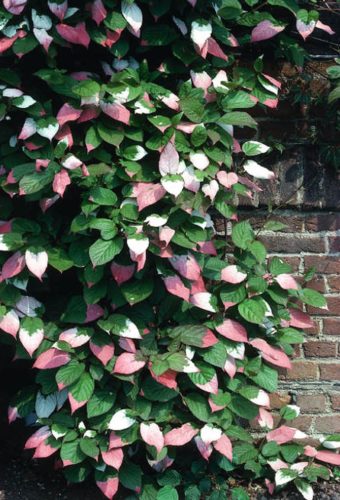
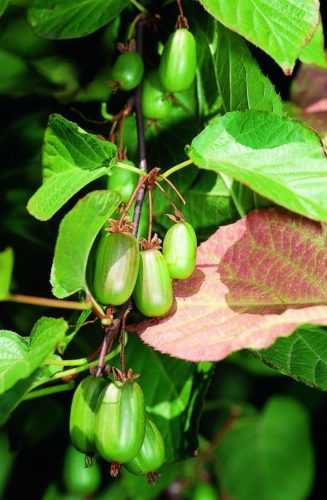
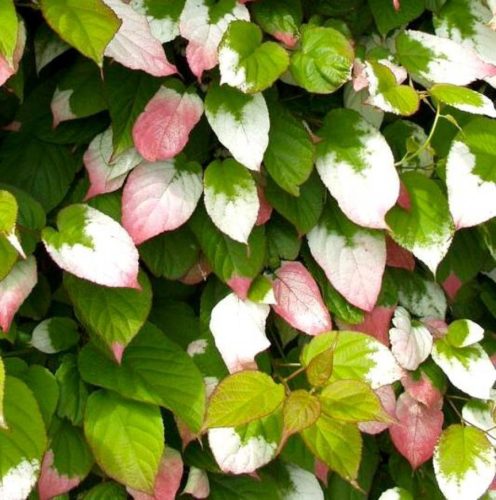













 Start a discussion ...
Start a discussion ...